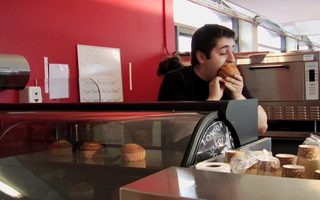The ivory tower may soon become the ivory browser.
Online learning is growing, around the world and at Harvard. Harvard’s EdX program has provided free online education to students across the world, and HarvardX for Alumni has offered graduates the chance to attend lecture for life.
Recently, similar initiatives have found their way through Johnston Gate and onto the study cards of current Harvard students. Last spring, the Faculty of Arts and Sciences piloted a number of “blended” courses—ones that mix online learning with the traditional classroom variety. The four courses Harvard’s Bok Center for Teaching and Learning examined garnered lower student ratings than they did in their earlier forms, before the online transition. But that shouldn’t stop Harvard from experimenting.
On the one hand, Harvard has to embrace digital opportunities to stay ahead of the pack. It is almost certain that technology will dictate the future of learning, and in many ways it is for the better: Innovation helps spread knowledge beyond a campus and streamline knowledge within one. Online tools, for example, can supplement the classroom experience—clickable content on the web is likely to hold a student’s attention better than the same visual projected on a screen a hundred feet away.
At the same time, however, online learning inevitably takes away from time spent in the classroom. This deprives students of the interactions with peers and professors that define a college experience—hearing others voice their ideas out loud and engaging with them challenges our own viewpoints and helps us develop them more fully. Without the personal aspect that has helped Harvard shape scholars over hundreds of years, teaching and learning will not be the same, and it is possible neither will be as effective.
Harvard must strike a balance between taking advantage of cutting-edge technologies and preserving what already works well. Instead of jumping off the deep end with classes where the majority of the material appears online, Harvard should wade in the shallows and make sure students have the chance to see each other and their teachers. Some courses that last spring nixed those chances are already following such a path by reintroducing seminars and sections. These are the types of plans we hope to see in other blended courses across departments.
Blended courses are a peek into the future. To improve the years to come, Harvard should take care not to forget those that have already passed.
Read more in Opinion
Still Separate, Shamefully UnequalRecommended Articles
-
 Ivory Tower Releases Episode One, Season Nine
Ivory Tower Releases Episode One, Season Nine -
 ‘Tower’ Hits New Height
‘Tower’ Hits New Height -
Ten Things to Talk AboutBabies, Mitt Romney, and So Many Tourists
-
 I Keep Asking You Questions
I Keep Asking You Questions -
San Jose State Integrates EdX Into CoursesSan Jose State University will offer more courses that integrate Harvard’s virtual learning platform edX into their lesson plans, as well as work with other California universities to replicate this initiative at schools across the state, SJSU and edX announced Wednesday.
-
 Weapons of Peace?
Weapons of Peace?













